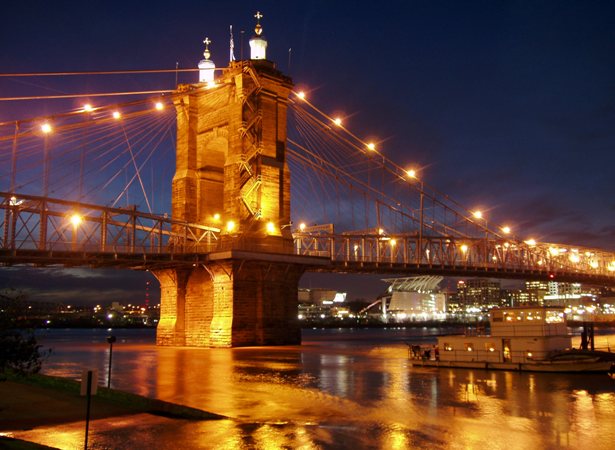
| WWT Shows | CLICK TO: Join and Support Internet Horology Club 185™ | IHC185™ Forums |

|
• Check Out Our... • • TWO Book Offer! • |
Welcome Aboard IHC185™  Internet Horology Club 185
Internet Horology Club 185  IHC185™ Discussion Site Main Page
IHC185™ Discussion Site Main Page  Our Exclusive "Timekeepers Photo Gallery"
Our Exclusive "Timekeepers Photo Gallery"  IHC185™ "Timekeepers Photo Gallery"
IHC185™ "Timekeepers Photo Gallery"  CANADIAN Private-Label Watches
CANADIAN Private-Label Watches
 Internet Horology Club 185
Internet Horology Club 185  IHC185™ Discussion Site Main Page
IHC185™ Discussion Site Main Page  Our Exclusive "Timekeepers Photo Gallery"
Our Exclusive "Timekeepers Photo Gallery"  IHC185™ "Timekeepers Photo Gallery"
IHC185™ "Timekeepers Photo Gallery"  CANADIAN Private-Label Watches
CANADIAN Private-Label WatchesRelated Content: Larry Buchan's ..."Tales from the Rails"
Go  | New Topic  | Find-Or-Search  | Notify  | Tools  | Reply to Post  |  |
| Railway Historian IHC Life Member Site Moderator |
South Bend 18 size, 17 jewel, Grade 347 in flag, Serial No. 564450 Manufactured 1909, Model 2, private-label single sunk 12 hour Arabic dial marked "Canadian Northern Special" Yellow Gold Filled AWC Co. Fortune case 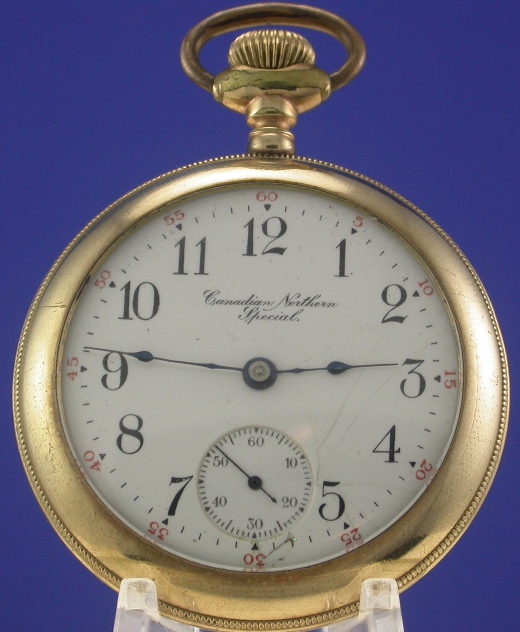 | |||
| Railway Historian IHC Life Member Site Moderator |
Dial  | |||
| Railway Historian IHC Life Member Site Moderator |
Dial close-up, fairly scarce pocket watch. I've only seen two other examples, one had a Roman numeral dial 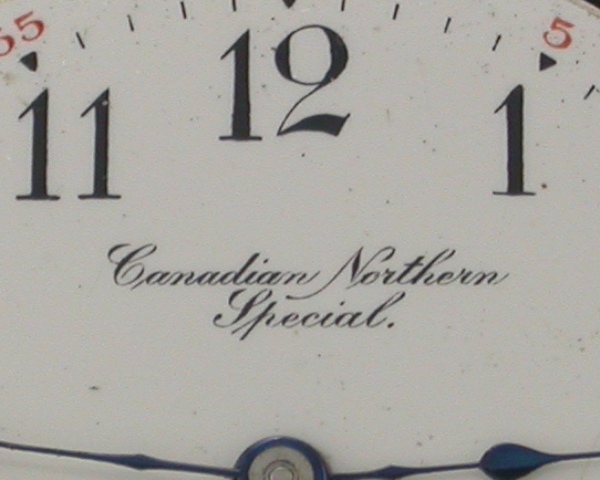 | |||
| Railway Historian IHC Life Member Site Moderator |
Movement 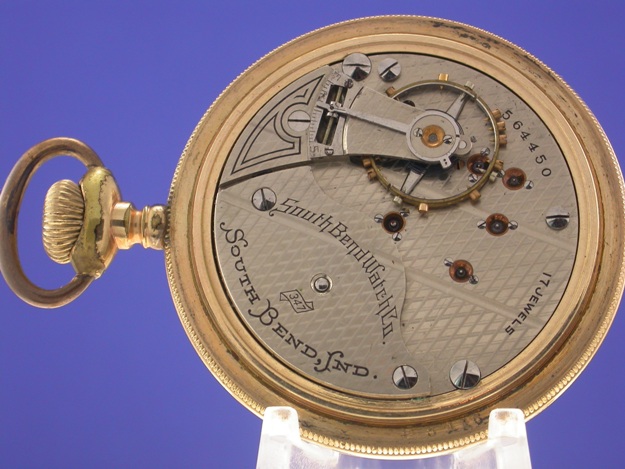 | |||
| Railway Historian IHC Life Member Site Moderator |
Movement close-up 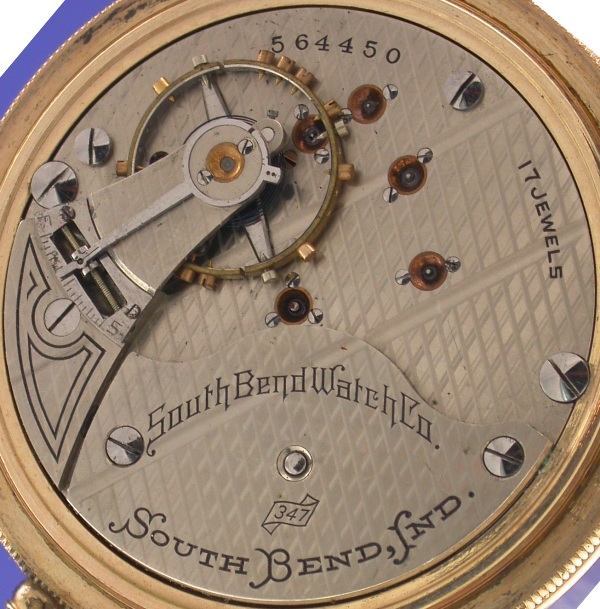 | |||
| Railway Historian IHC Life Member Site Moderator |
Case back 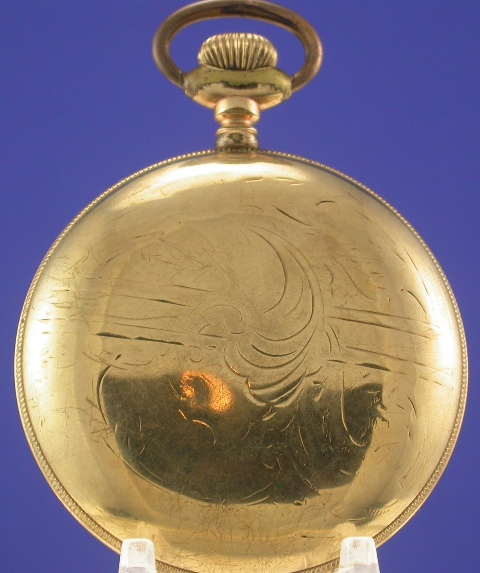 | |||
| Railway Historian IHC Life Member Site Moderator |
Case trademark "Fortune." American Watch Case Co. of Toronto, Ontario. 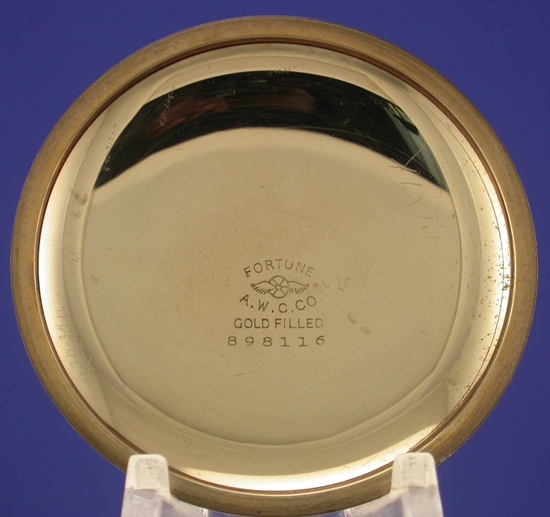 | |||
| Railway Historian IHC Life Member Site Moderator |
The Canadian Northern Railway began from independent branch lines that were constructed in Manitoba in response to the monopoly of the Canadian Pacific Railway many of these branch lines were built with the sponsorship of the provincial government, which sought to subsidize local competition to the federally subsidized CPR, there was another factor provided by the encroaching Northern Pacific Railway from across the border in the south. Two of the branch line contractors, William MacKenzie and Donald Mann took control of the bankrupt Lake Manitoba Railway and Canal Company in 1896, and by 1897 they were building further north into Manitoba's Interlake district as well as east and west of Winnipeg, they were also building and buying lines south to connect to the US border at Pembina, North Dakota, and east to Ontario. The Canadian Northern Railway was established in 1899, and all railway companies owned by MacKenzie and Mann (primarily in Manitoba) were consolidated into the new entity. CNoR's first step toward completing directly with the CPR came at the start of the 20th century with the decision to build a line linking the Prairie Provinces with Lake Superior at the harbor in Port Arthur , which would permit the shipping of western grain to European markets as well as the transport of eastern Canadian goods to the West. In the years that followed MacKenzie and Mann were busy expanding their prairie branch line network to feed the connection to Port Arthur, while approached by the federal government and the Grand Trunk Railway to go together with them to form a second transcontinental railway, their efforts were spurned and MacKenzie and Mann decided to go it alone, and the federal government would go on to form a system composed of the Grand Trunk Pacific Railway and the National Transcontinental Railway. MacKenzie and Mann began significant expansion outside of the prairies, with the purchase of Great Lakes steamships, railways into northern Québec's Saguenay region and the acquisition of branch lines in southwestern Nova Scotia, other acquisitions were in southern Ontario and a connecting line was built from Toronto to Parry Sound. In 1905 the CNoR reached Edmonton, which had just been named capital of the newly formed province of Alberta. In Eastern Canada in 1908, a line was built East from the connection at Capreol, Ontario on the Toronto - Parry Sound line to Ottawa and on to Montréal in 1910 a direct Toronto- Montréal was built, in 1911, federal funding was made available for construction of the line Montréal - Capreol - Port Arthur. In 1912 with GTR and CPR holding the ideal southern routes around Mount Royal to downtown Montréal. CNoR started building a double track mainline north by building the Mount Royal Tunnel under the mountain to provide service to downtown Montréal. It Western Canada, in 1910 construction was started on the line west of Edmonton through Yellowhead Pass to Vancouver and in 1911 a new townsite named Port Mann on the Fraser River was built to accommodate new car shops and from where lines would extend to Vancouver. The CNoR construction costs were relatively frugal from the 1890s to the 1900s largely by acquiring bankrupt companies, or fishing failed construction projects. But by the 1910's significant expenses were added from the construction north of Lake Superior, the Mount Royal Tunnel, and the large costs of building on "the wrong side." Of the Thompson and Fraser rivers in the mountains of British Columbia, as the CPR had built their route previously and had their trackage on the more desirable eastern side of the Fraser Canyon. The last spike of the CNoR was driven January 23, 1915 at Basque, British Columbia, but were heavily in debt from the costly construction projects, the profitable prairie branch lines did not generate enough revenue to pay off the debts and the CNoR was nationalized by the federal government on September 6, 1918, when the directors of the CNoR including Mackenzie and Mann resigned. The first Canadian Northern Railway locomotive to enter Edmonton, Alberta November 24, 1905  | |||
| Railway Historian IHC Life Member Site Moderator |
The Seth Thomas private-label Canadian Northern Special with its 12 hour Arabic dial would be okay for service on all the CNoR Eastern lines from Port Arthur on Lake Superior and eastward To Québec City, Québec and the maritime lines in New Brunswick, and Nova Scotia. I don't think it would've been approved for service on these General Electric locomotives that served their career from 1918 to 1997 hauling passenger trains through the electrified Mount Royal tunnels into the Montréal, Québecs terminal on its last run.  | |||
| Railway Historian IHC Life Member Site Moderator |
Hamilton 18 size, 17 jewel, Grade 924, Serial No.130421 Date finished August 23, 1900 Date sold September 6, 1900 to Montréal Watch Case Co., Montréal, Québec. Private-Label "dial and movement marked "EH Williams, Barrie, Ont.", Single sunk black Roman numeral red inner tract 24-hour dial. A.W.C. Co. Sterling swing ring case.  | |||
| Railway Historian IHC Life Member Site Moderator |
Dial without bezel 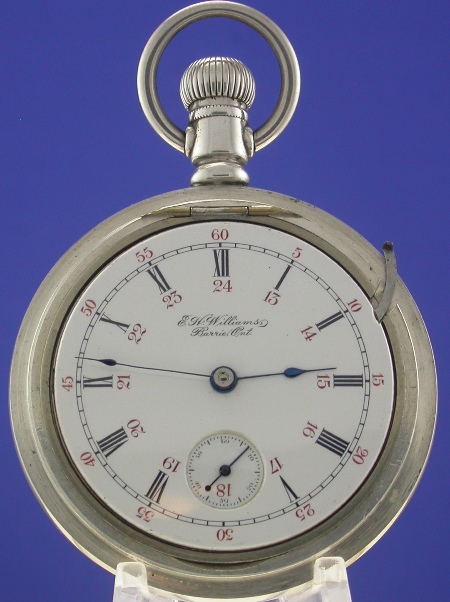 | |||
| Railway Historian IHC Life Member Site Moderator |
Dial signature 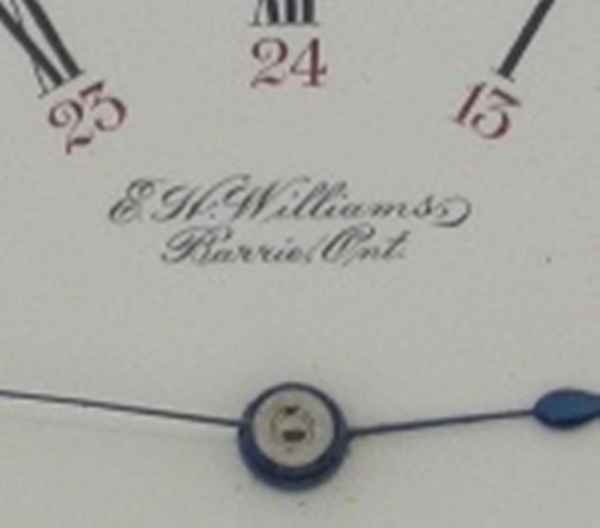 | |||
| Railway Historian IHC Life Member Site Moderator |
Movement  | |||
| Railway Historian IHC Life Member Site Moderator |
Case 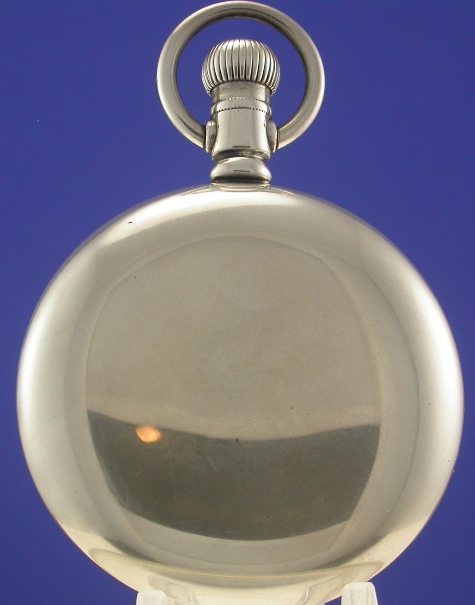 | |||
| Railway Historian IHC Life Member Site Moderator |
Case trademark 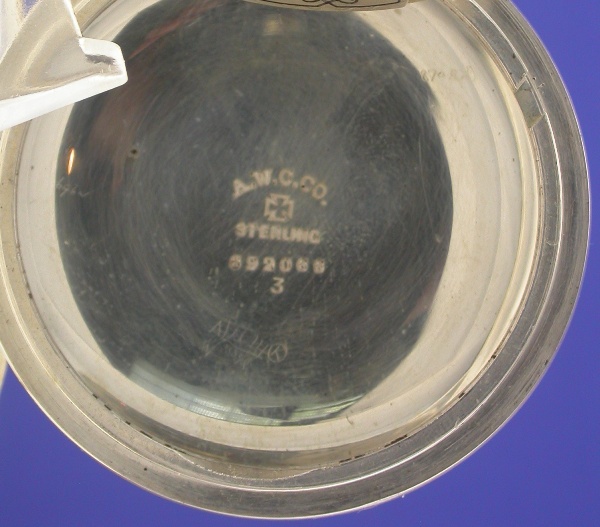 | |||
| Railway Historian IHC Life Member Site Moderator |
A Ontario Business Directory from 1903 shows Watchmakers: E.H. Barrie 44 Dunlop Street East. Barrie, Ontario is a city in central Ontario, Canada on the western shore of Lake Simcoe, Barrie is within the northern part of the Greater Golden Horseshoe, a densely populated and industrialized region of Ontario. The 19th century was the golden, of what has now become known as the "Railway Age" However, Even before World War I and the advent of the automobile, amalgamation, and hence rationalizes nationlike railway network was inevitable. This had already begun in the 19th century southern Ontario, where the Grand Trunk Railway took over a major Ontario rival, the Great Western Railway, in 1882, As it happened, for Simcoe County, this process was already underway in 1879 with the Northern & North Western Railways merger, followed by the Grand Trunk's acquisition of the N & NW in 1888, and its acquisition of the Midland Railway of Canada in 1893. Historically, Barrie was served by scheduled passenger rail service. Allandale station was a stop for the Grand Trunk Railway, Canadian National Railway, and Via Rail in addition, Ontario Northlands Northlander use the station as a stop. 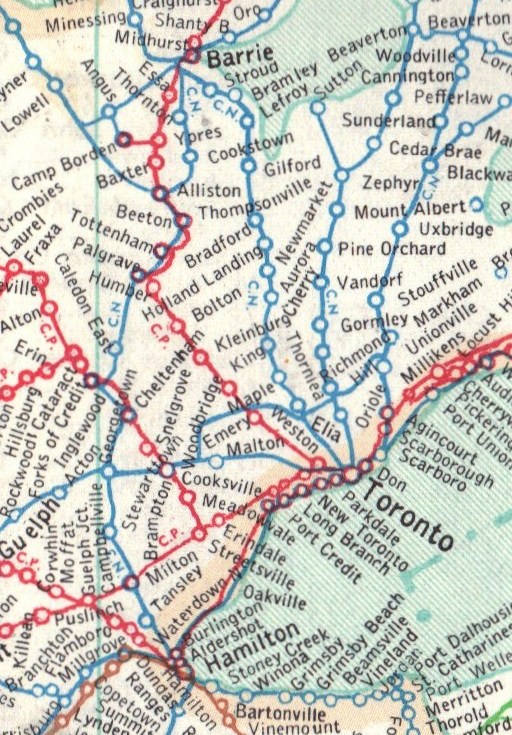 | |||
| Railway Historian IHC Life Member Site Moderator |
Barrie, Ontario railway station 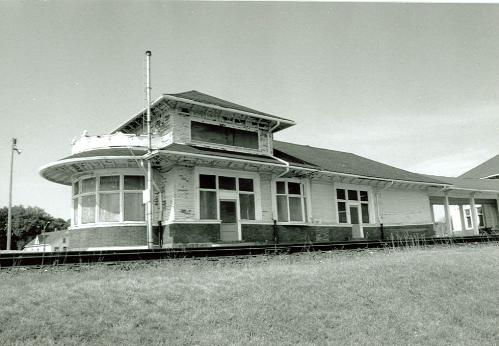 | |||
| Railway Historian IHC Life Member Site Moderator |
Railway station Barrie, Ontario 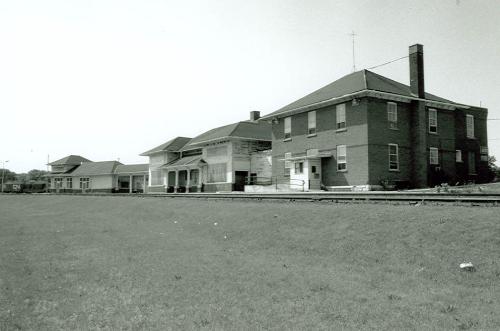 | |||
| Railway Historian IHC Life Member Site Moderator |
Hampden 18 size, 17 jewel, Serial No. 708012 Manufactured 1898, private-label "JL Wilson, Woodstock, Ont." single sunk 12 hour Arabic dial, Moon hands, Century Waltham AWW Co. swing ring silveroid case. 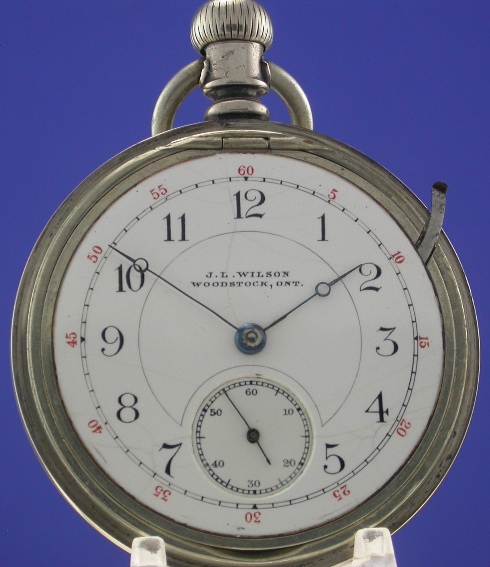 | |||
| Railway Historian IHC Life Member Site Moderator |
Dial close-up 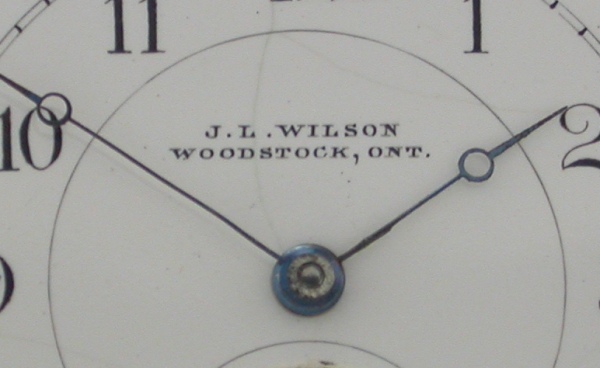 | |||
| Railway Historian IHC Life Member Site Moderator |
18 size, 17 jewel, movement 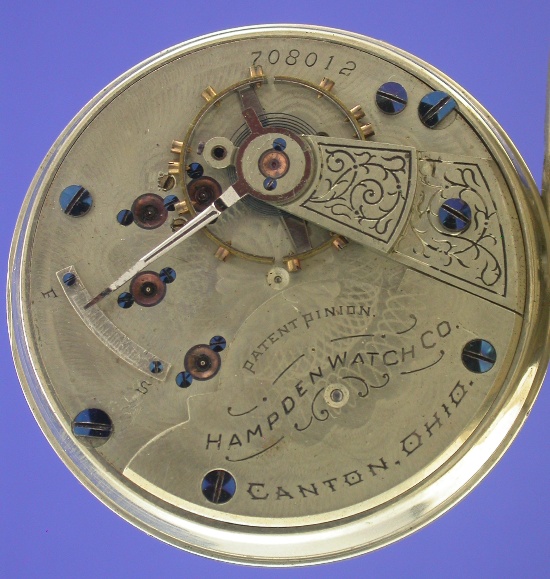 | |||
| Powered by Social Strata | Page 1 ... 33 34 35 36 37 38 39 ... 52 |
| Your request is being processed... |
|
©2002-2025 Internet Horology Club 185™ - Lindell V. Riddle President - All Rights Reserved Worldwide


